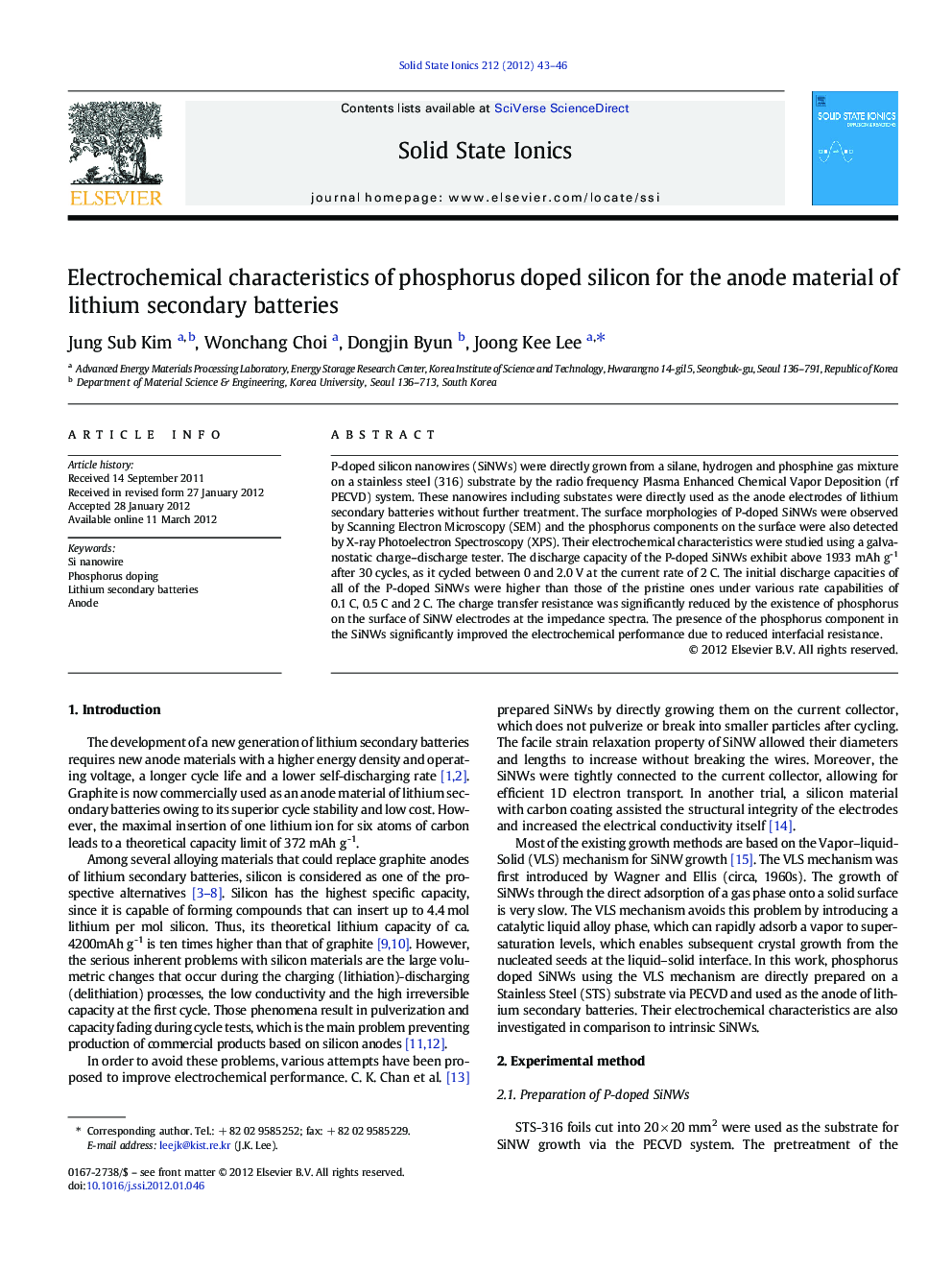| Article ID | Journal | Published Year | Pages | File Type |
|---|---|---|---|---|
| 1294463 | Solid State Ionics | 2012 | 4 Pages |
P-doped silicon nanowires (SiNWs) were directly grown from a silane, hydrogen and phosphine gas mixture on a stainless steel (316) substrate by the radio frequency Plasma Enhanced Chemical Vapor Deposition (rf PECVD) system. These nanowires including substates were directly used as the anode electrodes of lithium secondary batteries without further treatment. The surface morphologies of P-doped SiNWs were observed by Scanning Electron Microscopy (SEM) and the phosphorus components on the surface were also detected by X-ray Photoelectron Spectroscopy (XPS). Their electrochemical characteristics were studied using a galvanostatic charge–discharge tester. The discharge capacity of the P-doped SiNWs exhibit above 1933 mAh g-1 after 30 cycles, as it cycled between 0 and 2.0 V at the current rate of 2 C. The initial discharge capacities of all of the P-doped SiNWs were higher than those of the pristine ones under various rate capabilities of 0.1 C, 0.5 C and 2 C. The charge transfer resistance was significantly reduced by the existence of phosphorus on the surface of SiNW electrodes at the impedance spectra. The presence of the phosphorus component in the SiNWs significantly improved the electrochemical performance due to reduced interfacial resistance.
► P-doped SiNW are directly grown on a stainless steel substrate by rf-PECVD. ► P-SiNWs are used as anodes of lithium ion batteries without further treatment. ► The discharge capacity of the P-doped SiNWs is above 1933 mAh g–1 after 30 cycles. ► Presence of the P component in SiNWs improves the electrochemical performance.
